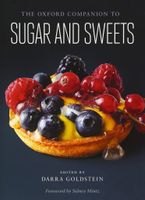Advertisement
Dango
Published 2015
Dango are similar to mochi, but the latter are usually created from glutinous rice or other whole grains, whereas dango are traditionally made from nonglutinous rice flour, which gives them a chewy consistency like gnocchi. See mochi. As is characteristic of Japanese sweets, many seasonal varieties of dango exist. Moon Viewing (tsukimi) Dango are prepared in the autumn; Flower Viewing (hanami) Dango are snacks in cherry blossom season, giving rise to the saying “preferring dumplings to flowers,” which indicates that the refreshments served at flower viewing parties often overshadow the beauty of the blossoms. Rice flour dango are preferred as confections, but savory dango made from wheat, buckwheat, and millet were staple foods before World War II. Farmers stuffed dango with vegetables flavored with miso and grilled plain dumplings for a quick meal. Dango can also be added to a clear or miso soup or to a sweet azuki bean soup called shiruko. See azuki beans. In some regions, dango were made from potatoes, nuts, or ground sesame. See also japan.


